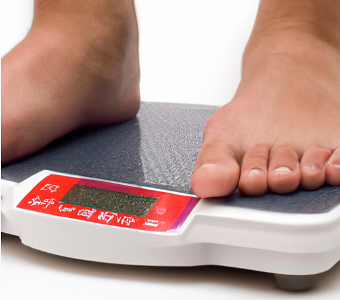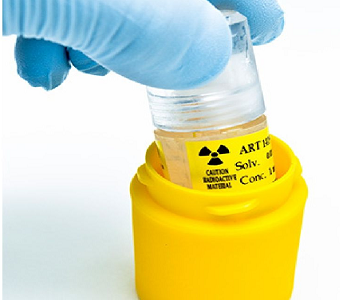Updated on Monday, January 26 to include new information regarding the OnCore-Tekmira merger. Below are a number of insights from documents released on Friday evening, January 23 (PREMA14A) related to the merger.
- OCB-030: IND and phase I initiation guidance for the 2nd half of 2015.
- CYT003: Pre-clinical proof-of-concept data in HBV models will be generated in the 1st half of 2015 in preparation of an IND (beginning trials) in (hopefully) chronically infected HBV individuals by the end of 2015. Tekmira has also acquired PPAR/TLR research programs as a result of the OnCore merger, which include TLR7 agonists and RIG-I agonists, possibly among others.
- Capsid assembly program: Pre-clinical proof-of-concept data generated. Guidance is for a IND filing with lead candidate in 2016.
- HBsAg secretion inhibitor: Initial pre-clinical data demonstrated sub-micromolar activity. Lead optimization ongoing with an IND filing guided for 2016.
- cccDNA formation inhibitor: This program is currently in early optimization with an IND filing expected in 2017.
- cccDNA epigenetic modifier: Lead optimization.
- HBV Clinical Guidance Summary (including TKM-HBV):
- 3 clinical stage HBV programs entering clinic by the end of 2015.
- 5 total clinical stage (or completed INDs) HBV programs by end of 2016.
Tekmira Pharmaceuticals (TKMR) announced on Wednesday dosing of the first patient in the phase I safety trial of TKM-HBV, the company’s therapeutic designed to reduce hepatitis B surface antigen (HBsAG) in patients with the hepatitis B virus (HBV).
This is the first clinical step for “new Tekmira”. Announced last week, Tekmira is merging with OnCore Biopharma to focus on therapeutics for Hepatitis B virus. We view the combined company as the premier HBV drug developer, not because Tekmira is outpacing competing HBV drug developers (slightly behind Arrowhead Research [ARWR]), but because the emerging pipeline ultimately fulfills our assumption that curing HBV will require a combination approach, and the new company has multiple options with early and novel candidates. Essentially, TKMR is on track to become an HBV basket in itself.
OnCore’s decision to merge into Tekmira, rather than a much-anticipated IPO this year, speaks volumes about Tekmira’s RNAi delivery technology. OnCore was founded in 2012 by the former Pharmasset management team and inventors of blockbuster hepatitis C drug, Sovaldi, shortly after Pharmasset’s sale to Gilead Sciences (GILD) for $11 billion. This is significant validation for Tekmira given the OnCore team’s history of success and experience with antivirals. Recall that Tekmira’s Lipid Nanoparticle technology is now in its fourth iteration and is one of the oldest RNAi delivery technologies. Detractors suggest that LNP is outdated (currently intravenous, versus subcutaneous for competitors) despite being the most clinically validated of the delivery vehicles in existence. The OnCore merger suggests otherwise, and we suspect will bring an entirely new cohort of investors to the TKMR story: a warehoused investor set who had anticipated OnCore’s public debut as well as former doubters who come around on this team’s ability to execute. In fact, RA Capital reported a 2.2M share stake in TKMR (about 5% of combined company) this week (noteworthy in light of Portfolio Manager Peter Kolchinsky’s outspoken view on HCV).
Consider that Tekmira’s new CSO, Michael Sofia, is the inventor of the single most profitable drug in history – Sovaldi. Though lightning doesn’t often strike twice, we see this as reason enough to own the stock with a long-term outlook. Hepatitis B is a completely untapped market (cure rates of ~10%) with prevalence exceeding that of hepatitis C. Should investors expect the same Sovaldi-like cures in HBV? Possibly not, but the bar for success is low in this indication, and cure rates of even 30-50% would be a tremendous improvement over existing options.
The new Tekmira will target three theorized pillars of a curative regimen for HBV, as explained by the company:
- Suppression of the Hepatitis B Virus’ ability to replicate
- Reactivation and stimulation of the body’s immune response to HBV (surface antigen reduction)
- Elimination (and inhibition of formation) of covalently closed circular DNA (cccDNA)
Though the actual path to an effective HBV cure is yet unclear, Tekmira is compelling due to the depth/variety of its pipeline. We highlight that investors should not expect major appreciation for TKMR in the near-term given long timelines to proving that early candidates work in the clinic, and suggest that investors continue to expect volatility. However, we like the idea of owning more TKMR, and see a floor for the stock in the mid-teens.
Here, we elucidate how Tekmira/OnCore’s combined drug candidates are emerging as the leading publicly traded HBV pipeline. For investors who are new to Tekmira and/or HBV, catch up in our previous coverage.
Revised cap structure, finances, and management team.
Under the terms of the transaction, OnCore stockholders will own approximately 50% of Tekmira upon closing. Tekmira is essentially doubling its share count to accommodate OnCore stakeholders, for a post-transaction outstanding share count of 44.9 million shares. On a fully diluted basis, this number is closer to 50 million. At $25, TKMR has a fully diluted market cap of $1.2 billion.
On a conference call associated with the merger announcement last week, Tekmira indicated that cash at the end of the last quarter (4Q14) was $111 million, in line with our expectations for around $10 million burn in the fourth quarter and $120.4M in cash/equivalents at the end of 3Q14. Tekmira has not yet reported end-of-year financials. Assuming Tekmira’s quarterly burn increases by 50% with the OnCore merger (aggressive, in our view), the company has almost two years of cash on the balance sheet.
We note that another financing is not out of the question, and that financial guidance will be forthcoming following completion of the merger. On last week’s conference call, Tekmira CFO Bruce Cousins commented, “…certainly the near-term cash needs of the business are provided for with the Tekmira treasury. But as we have outlined in this call, the pipeline for development is significant and the cash need is considerable in the business. So our near-term objective: we are going to complete this merger process and the necessary approvals then we are going to turn our attention to the treasury and work on that.” Why consider a secondary offering? Investors expected OnCore to IPO, and despite a somewhat rich valuation for TKMR, are likely willing to put money to work with this former Pharmasset management team. As the saying goes: “Raise when you can.”
Dr. Mark Murray will continue as CEO at “new” Tekmira, with former OnCore CEO Patrick Higgins joining as President and Chief Operating Officer. Bruce Cousins will continue as Tekmira’s CFO. Michael Sofia, Ph.D will step into the role of Chief Scientific Officer, with William Symonds (who led the development of Sovaldi at Pharmasset and Gilead Sciences) spearheading development of the drug portfolio; both are meaningful in light of Dr. Ian MacLachlan’s departure at the end of 2014. Vivek Ramaswamy will serve as Chairman of the combined company. [OnCore additions in bold]
- Mark Murray, Chief Executive Officer
- Patrick Higgins, President and Chief Operating Officer
- Bruce Cousins, Chief Financial Officer
- Michael Sofia, Chief Scientific Officer
- William Symonds, Chief Development Officer
- Mark Kowalski, Chief Medical Officer
- Mike Abrams, Chief Discovery Officer
- Bryce Roberts, Chief Legal Officer
- Michael McElhaugh, Chief Business Officer
“New” Tekmira’s pipeline: Numerous targets for numerous legs of HBV
Tekmira now has 3 HBV drug candidates entering or in the clinic this year, each with a mechanism of action (MoA) that falls into what the company believes are the ‘3 pillars of HBV treatment’. As we have discussed previously, a successful next-generation Hepatitis B treatment will most likely consist of combination therapy. OnCore’s well-defined approach, and our discussion with opinion leaders in the space, support our theory. OnCore defines the three legs of a functional HBV cure as:
- HBV replication inhibition: drugs that inhibit HBV’s ability to manufacture and secrete new HBV particles. Entecavir and other approved reverse transcriptase inhibitors would fall into this category.
- cccDNA reservoir inhibition/elimination: the holy grail and end-goal of facilitating a HBV cure. cccDNA – the reservoir of HBV – must be eliminated from hepatocytes for an individual infected with HBV to be considered “fully cured”. cccDNA is the source of genomic material and HBV’s persistence within the liver
- Host immune system stimulation/reactivation: HBV is a difficult virus to eradicate because the virus inhibits the host’s immune system. A successful HBV treatment will likely stimulate and possibly reactivate the body’s own immune system by suppressing repressive antigens (HBsAG). Interferon-α (IFN-α) falls into this category.
Outlined below, Tekmira’s revised HBV pipeline now consists of 9 drug candidates, three in the clinic or entering the clinic this year each with a mechanism that falls under one or more of OnCore’s three “pillars.” Key to the long thesis is TKMR’s multiple shots on goal in HBV, with eight distinct mechanisms to address the HBV life cycle. As a caveat, we ackowledge that many of these candidates have yet to enter the clinic, and risk remains.

As explained below, there’s evidence to suggest that TKM-HBV and Oncore’s HBV assets in aggregate, stand a good chance of inhibiting the HBV replication and cccDNA reservoir life cycle of HBV [1].

TKM-HBV
Tekmira’s TKM-HBV program consists of two wet-LNP formulations [referred herein as TKM-HBV4G (4th generation LNP) and TKM-HBV3G (3rd generation LNP)]. Both TKM-HBV formulations contain a cocktail of three UsiRNA RNAi triggers targeting highly conserved regions on the 4 HBV pre-genomic RNAs.
As we’ve discussed previously, Tekmira presented encouraging preclinical TKM-HBV3G data in a variety of preclinical models at the 10th Annual Meeting of the Oligonucleotide Therapeutics Society. This data included demonstrating potent reduction in HBsAg and cccDNA in the uPA/SCID chimeric mouse model. In aggregate, the data demonstrate that TKM-HBV3G may have the ability to facilitate at least a 1log10 reduction in HBsAg in the clinic, at safe therapeutic doses.
As depicted above in PURPLE, TKM-HBV facilitates the destruction of the 4 pre-genomic RNAs (4th 0.7kb mRNA encoding HBx not shown) through RNA interference. We believe this will lead to multiple downstream consequences – depicted above in BLUE as a result of RNAi destruction pre-genomic RNA depicted in PURPLE – which robustly inhibit the HBV and cccDNA life cycle:
- Preclinical TKM-HBV3G data demonstrating cccDNA reduction as a downstream result of inhibiting the production of all HBV proteins via the RNAi MoA. As shown in BLUE, this includes preventing cccDNA episomal maintenance and eventual formation by preventing the production of all HBV proteins.
- Prevention of new HBV subviral particle and viral particle formation, a downstream result of TKM-HBV’s RNAi MoA (shown in BLUE)
- By robustly inhibiting HBsAg and subviral particle production, TKM-HBV may also facilitate immune reactivation against HBV and cccDNA via humoral and T-cell mediated immune mechanisms.
TKM-HBV3G/4G has the potential to be a cornerstone drug in a successful HBV treatment regimen because of its potential to address numerous components of the HBV lifecycle. And, available preclinical data support our theory that TKM-HBV will be the most ‘potent’ RNAi HBV therapeutic because of Tekmira’s 3rd/4th-gen LNP and the use of UsiRNAs (previously covered HERE). The utilization of a second TKM-HBV formulation – 4th gen LNP – was revealed at Tekmira’s analyst day this past November. TKM-HBV4G appears to be 3 times more potent than TKM-HBV3G [2].

As a reminder, TKM-HBV3G and TKM-HBV4G utilize wet LNP formulations (requiring no pretreatment regimen) to maximize dosing levels and avoid unwanted immune effects. This is an important detail because it refutes the common misconception that TKM-HBV3G/4G will cause the safety issues seen with TKM-Ebola, which led to a clinical hold in 2014. Wet LNP formulations are significantly less immune-stimulatory compared to Tekmira’s lyophilized LNP (the formulation used in TKM-Ebola). Stratifying the apparent safety signal from TKM-Ebola to TKM-HBV would be nonsensical given an entirely different LNP formulation and RNAi trigger chemistry [2].

Tekmira just dosed the first patient in TKM-HBV-001, a phase I single-ascending dose safety study. The study will assess the safety, tolerability and pharmacokinetics of TKM-HBV4G (4th generation LNP) and TKM-HBV3G (3rd generation LNP)] in healthy subjects. For each formulation, Tekmira will include five dose-escalated cohorts of four subjects each (3:1 active:placebo), for 40 total patients between the two candidates. Tekmira has not issued guidance on how the data will be released, but the goal is identification of an ideal dose – in our view, under 1 [mg/kg] (and hopefully under 0.5 [mg/kg]) to move into phase II testing in chronically infected HBV patients, expected during the second half of 2015. Tekmira has discussed a rapid development plan for their phase IIa, conducting the single-dose portion in HBV subjects and then enrolling these same individuals in the multiple ascending dose portion later this year. With this development plan – summarized below – it is not unreasonable to expect single dose HBsAg knockdown data in chronically infected HBV patients in the 2nd half of 2015, though we have low expectations.


Already a Premium user? Sign In
As a result of the OnCore merger, Tekmira is developing what we view as the most diverse and promising pipeline of HBV drug candidates in the public realm, spearheaded by TKM-HBV. It cannot be stated enough that this deal combines what we have viewed as the most promising HBV RNAi therapeutic, TKM-HBV, with a proven management team in the biotechnology industry and exclusive research/drug candidates developed by the Blumberg Institute. It is for these reasons that we continue to view Tekmira as a must own name for exposure to the HBV, RNAi, and even mRNA spaces.
References
[1] http://dx.doi.org/10.1016/
[2] http://files.shareholder.
[3]https://www.dropbox.com/s/
[4] http://www.sciencedirect.
[5] http://www.journal-of-
[6] http://dx.doi.org/10.1016/
[7] http://onlinelibrary.
[8] http://onlinelibrary.
One or more of PropThink’s contributors are long TKMR, GILD, ARWR, or ALNY.




